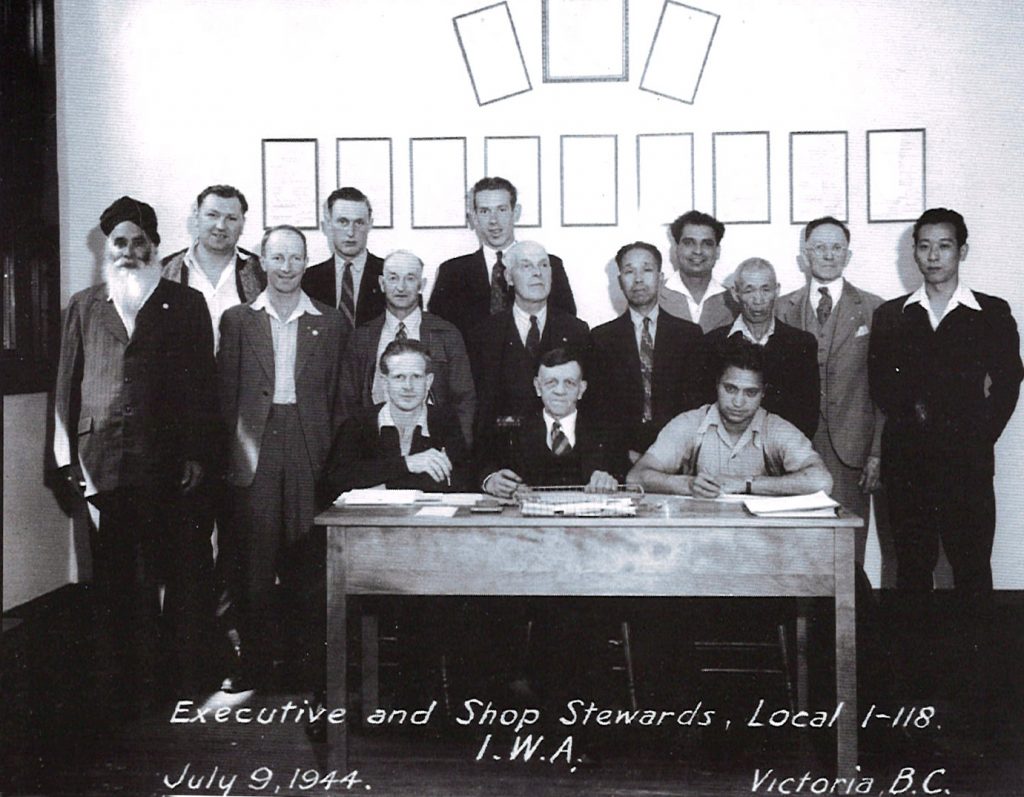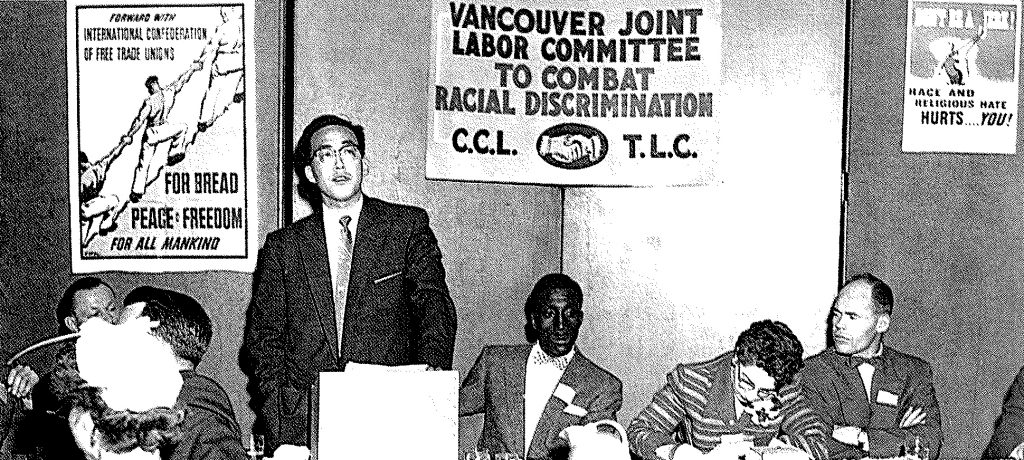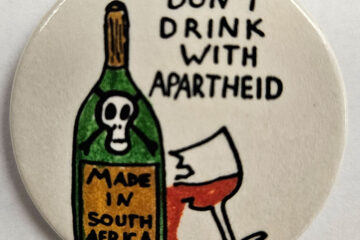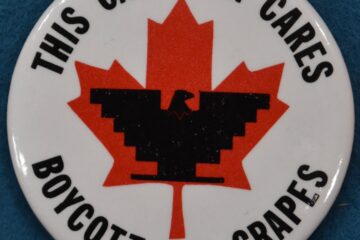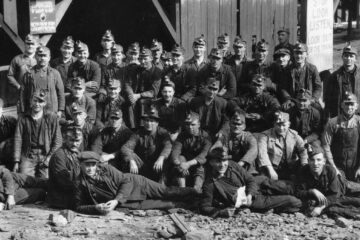Uniting Workers Across Ethnic Divides
by Rod Mickleburgh
With the end of the Depression, labour’s long hostility towards Asian workers slowly began to change. The International Woodworkers of America led the way by hiring three non-Caucasian organizers to break down the barriers of race and unite workers across ethnic divides in the forest industry’s diverse workforce. Though rarely remembered as union pioneers today, Roy Mah, Joe Miyazawa and Darshan Singh Sangha all played key roles during the union’s intense organizing drives of the 1940s.
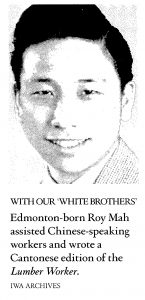 Roy Mah, who later became a widely-admired leader of Vancouver’s Chinese-Canadian community, was hired by the IWA in early 1944 while a student at the University of Victoria. At Vancouver Island and Lower Mainland sawmills, Mah hammered home the need for Chinese-Canadian workers to come together in common cause with their “white brothers”.
Roy Mah, who later became a widely-admired leader of Vancouver’s Chinese-Canadian community, was hired by the IWA in early 1944 while a student at the University of Victoria. At Vancouver Island and Lower Mainland sawmills, Mah hammered home the need for Chinese-Canadian workers to come together in common cause with their “white brothers”.
He wrote and edited a Cantonese edition of the union newspaper, believed to be the first such publication in North America. After a brief but decorated stint in the war, serving on behalf of a country that denied him the vote, Mah returned to the IWA for two more years. He is credited with bringing as many as 2,500 Chinese-Canadian workers into the union. “I always want to fight for a cause, especially for a just cause,” said Mah, as he looked back on his long life dedicated to making British Columbia a better society.
Joe Miyazawa got his union start during internment, helping to organize the Kamloops sawmill where he and other Japanese-Canadians found work. His father had been active in the Japanese Camp and Mill Workers Union. After the war, Miyazawa signed on as an IWA organizer in the West Kootenays, where many Japanese-Canadians remained after internment ran its course. “Wherever I was, I knew somebody, and then we’d call a meeting at the farmers’ institute or ladies’ institute hall or some damn thing,” he recalled of his fruitful time in the region. Once the RCMP granted permission for his return to the coast, Miyazawa became the IWA’s associate director of research. Until leaving the union in 1965, he was a tireless advocate for human rights, at home and internationally.
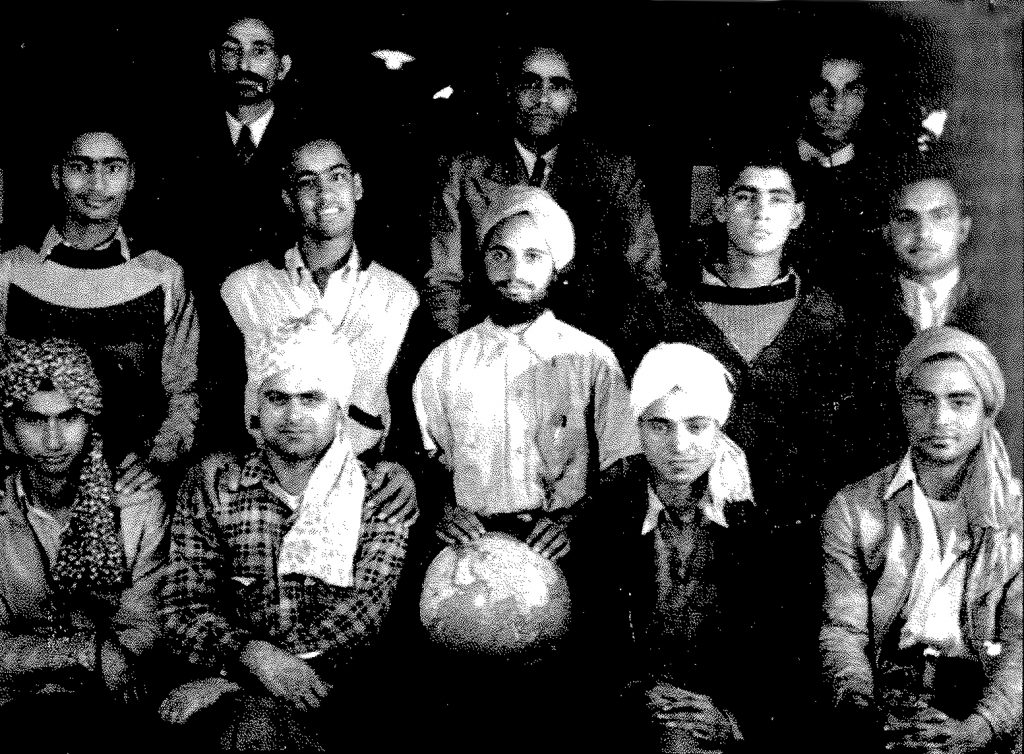
Darshan Singh Sangha in traditional Punjabi dress with mill workers in 1940s. Photo: Darshan Singh Sangha ‘Canadian’ Heritage Foundation
The life of Darshan Singh Sangha might have come from a novel. Son of a poor Punjabi farmer, he emigrated to BC as a 19-year old student in 1937, but quickly sought work instead in a series of sawmills. There he saw first hand the discrimination and poor conditions experienced by Asian workers.
The experience turned him towards communism and the IWA. Swayed by his Punjabi union pamphlets and fiery rhetoric, Sikh sawmill workers who had previously shied from white-run unions began flocking to the IWA. When the Youbou mill manager tried to evict Sangha for talking to the workforce, 90 Sikh employees gathered outside in the rain and told the boss that if he were thrown out, they would leave, too. Sangha was allowed to stay. At some predominantly Sikh mills, the vote to join the IWA was almost unanimous.
Sangha rose to became an IWA trustee for the district, the first non-white to hold such a position. “I was only an organizer,” remembered Roy Mah. “Darshan was part of the upper layers of the leadership.” But in 1947, Sangha opted to return to India to be part of his native country’s new independence.
In his resignation letter, Sangha reminded union members: “One of the greatest achievements of the IWA was the uniting of all woodworkers – white, Indian, Chinese, Japanese – irrespective of race and colour.”
As a tribute to his years here, he changed his name to Darshan Singh Canadian. Still a Communist, he was assassinated by nationalist extremists in 1986. At a memorial gathering in Vancouver, the IWA’s normally reserved legislative director Clay Perry hailed Sangha as “a jewel of my union, a jewel of the human race”.
See also:
Harjit Daudharia, ed. (2004). Darshan. Darshan Singh Sangha ‘Canadian’ Heritage Foundation.
Andrew Neufeld and Andrew Parnaby. (2000). The IWA in Canada : the life and times of an industrial union. Vancouver : IWA Canada/New Star Books.
